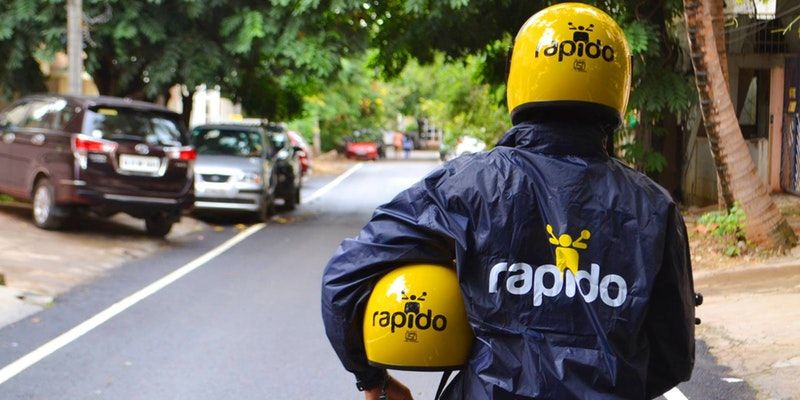How Uber's biggest rival in Europe is giving it a run for its money
Taxify, which is available in 57 cities across Europe and Africa, has close to 15 million users globally. The startup also raised $175 million funding led by German-automotive giant Daimler this year, taking its valuation to $1 billion.
When Markus Villig was 19, he recalls he was serious about starting up in the tech industry. It took several weeks for him to convince his parents to entrust him with a couple of thousand euros - money set aside for his education.
Today, his startup Taxify is proving to be stiff competition to global ride-hailing behemoth Uber in Europe and other geographies. Apart from being backed by China’s ride-hailing conglomerate Didi Chuxing, Taxify also raised $175 million funding round led by German-automotive giant Daimler this year, taking the startup’s valuation to $1 billion.

However, Taxify wasn’t always a ride-hailing service. In its early days, the Tallinn, Estonia-based startup was a fleet management system and was dispatching software for taxi companies. Taxify’s pitch in those days was that it was bringing taxis to the digital age.
And, things have evolved since then.
Five years after starting up, today, Taxify is available in 57 cities across Europe and Africa and has close to 15 million users globally.
Racing against Uber
How does one toe around when one of the world’s biggest ride-hailing service is your competition.
For Markus and Taxify, the answer lies in its localisation. Speaking at Europe’s startup and technology conference Slush 2018 in Helsinki, Markus said: “If you see, the best product and localisation have always won, not capital.”
But when one works in a highly-regulated market like Europe, where there are fewer drivers, treating them right becomes even more crucial. Hence, providing perks and incentives to drivers has become an integral part of Taxify’s fight against competition. Apart from getting them phones to operate and providing fuel discounts, Taxify is also going the extra mile to keep drivers on its platform content. Markus adds,
“Drivers need flexibility and do not want to be classified as employees and being stuck with a schedule. Hence, the self-employed status and flexibility of timing is a lucrative option.”
Commenting about Taxify’s fight with Uber, Markus says: “At the end of the day, drivers care about their earnings. Hence, we provide fuel discounts and take only half the commissions from drivers. This is because we have been a lean team right from the start. Hence, we have been able to undercut them (Uber).”
At present, Taxify charges 15 percent commission from its drivers, half of what its competition charges.
Taxify is staying lean
Taxify, which operated with a team strength of under 100 individuals for two years, has now beefed up to a team of 700 people. The startup claims it is also adding close to 30-40 individuals every month on its platform.
When asked whether they are going away from their philosophy of being lean, Markus quickly responds,
“The size of the team might seem huge, but the head count is still relatively small when compared to the scale of our business or when seen in contrast to our US friends (Uber).”
Taxify claims that drivers on its platform will rake a combined of $1.1 billion from rides this year. Further, its investor Didi Chuxing shares the same sentiment with the Unicorn.
Hailing bike taxis and scooters
Taxify’s fight against Uber doesn’t stop at Europe but extends to Africa, and the Estonian startup has taken on motorbike taxis to win this race. It is estimated that Taxify, with operations in Kenya, Uganda as well as Tanzania, already has close to 2.4 million users in Africa.
“This year, we started motorcycle taxis in Africa because they are a lot faster in these geographies. And then we went on to introduce Electronic scooters (e-scooters) in Europe, making us the first platform to do so. We launched our first dockless scooters in Paris a few weeks ago,” says Markus.
And the experiment has been rather successful. Markus says that 40 percent of all its scooter rides are taken by existing customers, resulting in no customer acquisition costs. Also, the data around where most rides are hailed from helps Taxify to target these areas heavily with newer products.
So, what are the challenges?
Markus points out,
“Most cities are very welcoming of newer modes of mobility as long as they are operated well. However, there are operational challenges around scooters piling up at a certain area and the general safety of the riders. But there are other regulatory challenges to be seen.”
Next year, Taxify aims to be present in 100 cities as compared to 40 cities at present. But does that mean that scooters will be Taxify’s trump card for new geographies?
Markus doesn’t believe so as he points out weather and local infrastructure to be the key parameters for introducing scooters. However, he is optimistic the company will be entering newer geographies with differentiated products.
However, Markus doesn’t deny that with multiple products comes the need to position them differently. No wonder the company named its electric scooter range in Europe as Bolt.
He adds,
“As we cover more mobility offerings, we will be branding them and positioning them all differently.”

Future isn’t autonomous
Taxify’s rival Uber has been betting big on its autonomous car project. In August this year, Toyota invested $500 million in the San Francisco-based ride-hailing behemoth to jointly work on developing self-driving cars.
When Markus was asked whether the future was autonomous for Taxify, he replied,
“Yes, it is true that in 10 years people will buy a lot less cars. But I don’t think autonomous cars will have any massive impact. We have to find solutions which solve problems of today, and for us, scooters are one of them.”









![[Stellar Insights] Here are some tips to help entrepreneurs know how and when to scale their organisation](https://images.yourstory.com/cs/2/f02aced0d86311e98e0865c1f0fe59a2/organisation-scaling-1595477426153.png)

